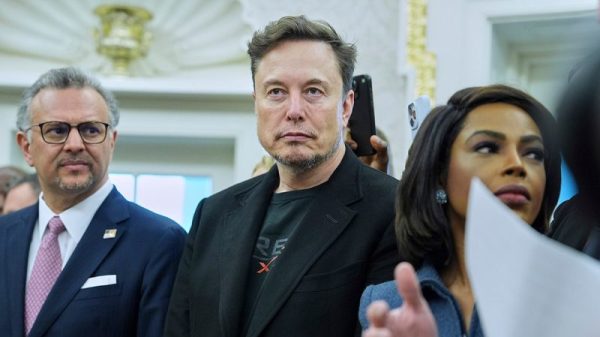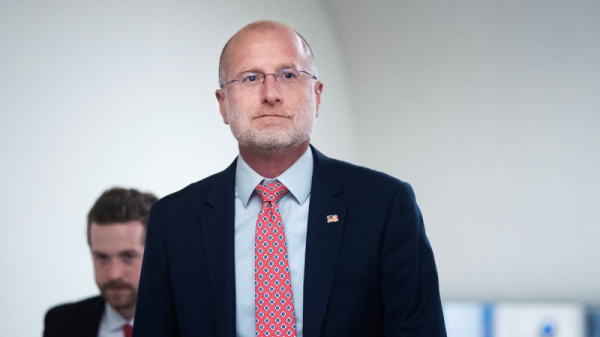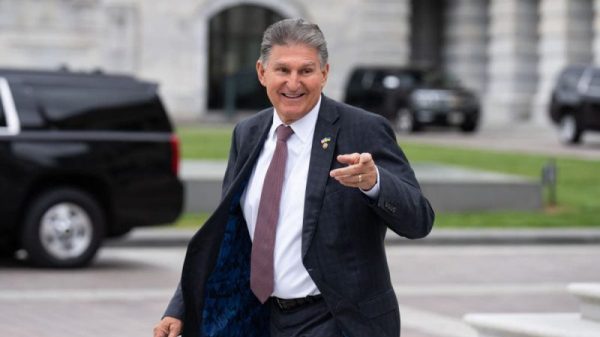Despite their significant policy differences, when it comes to Social Security both leading presidential candidates see eye to eye. Trump and Biden have both vowed not to cut Social Security. While these pledges may resonate with politically powerful voters, a “do-nothing” approach to Social Security that avoids necessary structural reforms and instead promises to preserve benefits at current levels, comes at a high cost for younger generations.
If the Social Security program continues to operate as it currently does, a median US worker earning around $60,000 annually could soon face an additional burden of more than $3,000 in payroll taxes, bringing their total payroll tax burden to more than $10,000 a year.
Figure 1 shows how much taxes would increase for a median US worker should Congress increase the payroll tax rate from 12.4 percent to 17.5 percent, which is necessary to maintain Social Security’s current benefit structure through 2097. With this higher payroll tax rate, the yearly payroll tax burden for median earners would rise by more than 40 percent, increasing from $7,449 to $10,512.
According to the Congressional Budget Office, the federal government could pay the benefits prescribed by current law through 2097 and have a trust fund balance equal to a year’s benefits at the end of that period, if payroll tax rates were raised immediately and permanently by about 5.1 percentage points—from 12.4 percent of taxable payroll under current law to 17.5 percent of taxable payroll, an increase of 41 percent. That’s what it would take to balance the benefits Congress has promised retirees with the payroll taxes workers would need to pay to cover their full cost.
You can calculate your own implied payroll tax increase by multiplying your current earnings, up to the Social Security payroll tax threshold of $168,600, by 0.051. For a median household living in Washington, DC, with annual earnings of $90,000, that amounts to a $4590 payroll tax increase (90,000*0.051).
This simple calculation illustrates how a political promise not to adjust benefits comes at a high cost. The payroll tax increase necessary to fund full benefits for the next 75 years is just shy of what the typical US household spends on health insurance, eating out, or their entire entertainment budget in one year.
The severity of what such a payroll tax increase would mean for most American households explains why neither party has endorsed raising payroll taxes sufficiently to cover the cost of full benefits. No politician running for (re-)election would want to be on the record for raising payroll taxes by $3000 for the typical US worker. In fact, President Biden has vowed not to increase taxes for Americans making less than $400,000 annually.
This raises the 25-trillion-dollar question. If raising the payroll tax sufficiently to cover the cost of currently legislated benefits is out of the question, how then will politicians avoid both automatic benefit cuts when Social Security’s trust fund borrowing authority expires in 2033 and cover the $25 trillion shortfall the program faces over the next 75 years?
Social Security’s long-term unfunded obligation—the difference between projected revenues and spending, in net present value terms—is nearly as large as the entire US publicly held debt, or the size of the US economy.
Under current law, Social Security, which already runs cash-flow deficits in the hundreds of billions each year, will be prohibited from paying out full benefits after its trust fund reserves are depleted in 2033. Given current projections, Social Security’s spending, in excess of its dedicated revenue sources (primarily payroll taxes and income taxes on current benefits) will increase US deficits by more than $4 trillion over the next ten years. Should Congress decide to continue borrowing to paper over Social Security’s cash-flow deficits beyond 2033, this would entail a massive intergenerational wealth transfer from current and future workers to retirees, plus associated interest costs. Such a policy of “just borrow more” might also rattle US bondholders, who may interpret congressional abdication of fiscal responsibility as a sign of higher inflation down the road, with the US government coming to rely more heavily on the Fed for financing its unsustainable deficit spending instead of making necessary fiscal corrections.
Even eliminating the Social Security tax cap, making all earned income subject to payroll taxes, won’t solve the program’s financial issues. As the Manhattan Institute’s Brian Riedl has detailed, eliminating the payroll tax cap would only cover half of the long-term funding shortfall and would involve a massive marginal tax increase on the upper middle class, making such a proposal politically and economically challenging. As we highlighted in the last Debt Digest, increases in the marginal tax rate for higher-income earners come at the high cost of reduced innovation and economic growth.
The bottom line is that promises to keep Social Security benefits exactly as currently legislated are unaffordable, no matter how Congress chooses to close the funding gap. Constituents should therefore take any electoral promises that Social Security can somehow be sustained without any changes to benefits with a heap of salt. Social Security reform is coming. The real question is how will this generation balance the promise to keep seniors out of poverty in old age with keeping the American dream alive for younger generations.





























